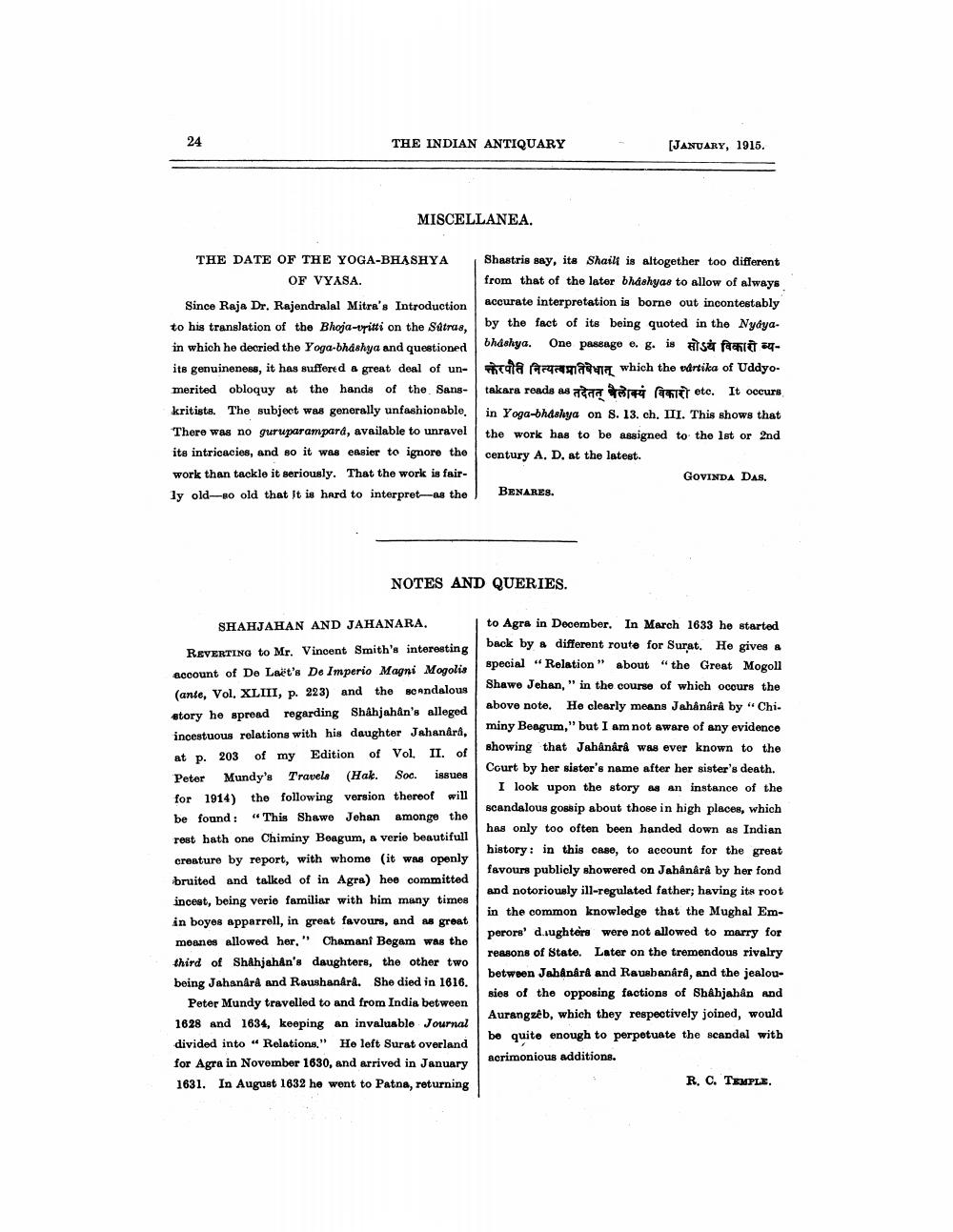________________
THE INDIAN ANTIQUARY
[JANUARY, 1915.
MISCELLANEA.
THE DATE OF THE YOGA-BHASHYA
OF VYASA. Since Raja Dr. Rajendralal Mitra's Introduction to his translation of the Bhoja-voitti on the Satras, in which he decried the Yoga-bhashya and questioned its genuineness, it has suffered a great deal of unmerited obloquy at the hands of the Sans- kritists. The subject was generally unfashionablo. There was no guruparampara, available to unravel its intricacies, and so it was easier to ignore the work than tackle it seriously. That the work is fairly old-Bo old that it is hard to interpret--as the
Shastris say, its Shaili is altogether too different from that of the later bhashyas to allow of always accurate interpretation is borne out incontestably by the fact of its being quoted in the Nyayabhashya. One passage e. g. is atså fall 24तरपौत नित्यत्वप्रतिषेधात् which the vartika of Uddyotakara reads as an art etc. It occurs in Yoga-bhashya on S. 13. ch. III. This shows that the work has to be assigned to the 1st or 2nd century A. D. at the latest.
GOVINDA DAS. BENARES.
NOTES AND QUERIES.
SHAHJAHAN AND JAHANARA REVERTING to Mr. Vincent Smith's interesting account of De Laët's De Imperio Magni Mogolis (ante, Vol. XLIII, p. 223) and the scandalous story he spread regarding Shahjahan's alleged incestuous relations with his daughter Jahandra, at p. 203 of my Edition of Vol. II. of Peter Mundy's Travels (Hak. Soc. issues for 1914) the following version thereof will be found: "This Shawe Jehan amonge the rest bath one Chiminy Beagum, a verie beautifull creature by report, with whome (it was openly bruited and talked of in Agra) hoe committed incest, being verie familiar with him many times in boyes apparrell, in great favours, and a great moanes allowed her." Chamant Begam was the third of Shahjahan's daughters, the other two being Jahanard and Raushankra. She died in 1816.
Peter Mundy travelled to and from India between 1628 and 1634, keeping an invaluable Journal divided into “Relations." He left Surat overland for Agra in November 1630, and arrived in January 1631. In August 1632 he went to Patna, returning
to Agra in December. In March 1633 he started back by a different route for Surat. He gives & special "Relation about "the Great Mogoll Shawo Jehan," in the course of which ooours the above note. He clearly means Jahanará by "Chi. miny Beagum," but I am not aware of any evidence showing that Jahanara was ever known to the Court by her sister's name after her sister's death.
I look upon the story as an instance of the scandalous gossip about those in high places, which has only too often been handed down as Indian history: in this case, to account for the great favours publicly showered on Jahânårå by her fond and notoriously ill-regulated father; having its root in the common knowledge that the Mughal Emperors' d. ughters were not allowed to marry for reasons of State. Later on the tremendous rivalry between Jahanard and Rauabanara, and the jealousies of the opposing factions of Shahjahan and Aurangzeb, which they respectively joined, would be quite enough to perpetuate the scandal with acrimonious additions.
R. C. TEMPLE.




